ALL ABOUT HOSTAS
Hostas can turn a dull, shady part of your yard into an elegant, low-maintenance landscape that looks attractive from spring through fall. Unlike most perennials, hostas are grown for their colorful foliage rather than for their flowers. There are hundreds of varieties to choose from, each displaying its own unique leaf shape, size and color.
Finding interesting ways to combine these different types of foliage is part of the fun of growing hostas. Good companions include other shade lovers such as astilbe, bleeding heart, ferns, caladiums and begonias.
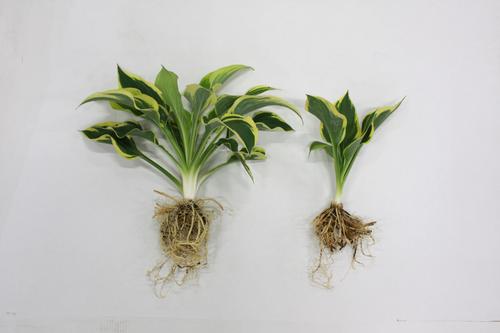
START WITH A BETTER PLANT
When you compare two hosta plants side by side, it’s easy to see differences in quality. Longfield Gardens supplies grade #1 plants (shown at far left) with strong, well developed root systems. The larger the plant, the faster it will settle in and become an attractive addition to your garden.

PLAN FOR SUCCESS
SUN AND SHADE: Hostas grow best in partial shade. In northern areas some varieties will tolerate full sun.
ZONE: Hostas are winter hardy in zones 3-9.
WHEN TO PLANT: Hostas should be planted in spring when the soil is moist and relatively cool.
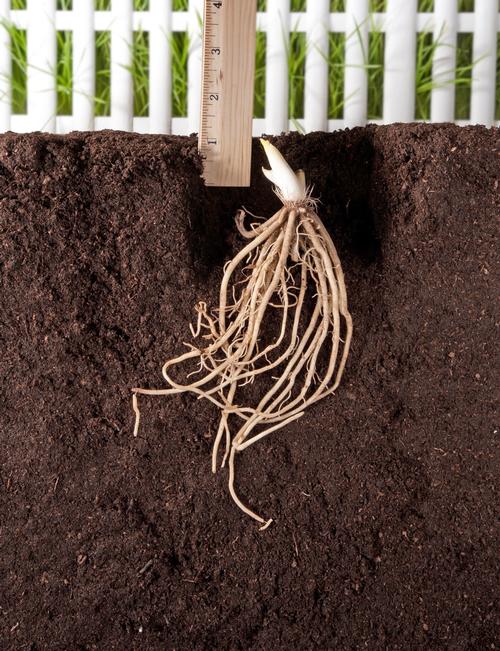
HOW TO PLANT HOSTAS
Loosen the soil to a depth of 12” and mix in several handfuls of compost and ¼ to ½ cup of all-purpose granular fertilizer (follow package directions)
Put the hosta in the hole so the crown of the plant (where the roots meet the stem) is 1” below the soil line.
Cover the roots with soil and water well.
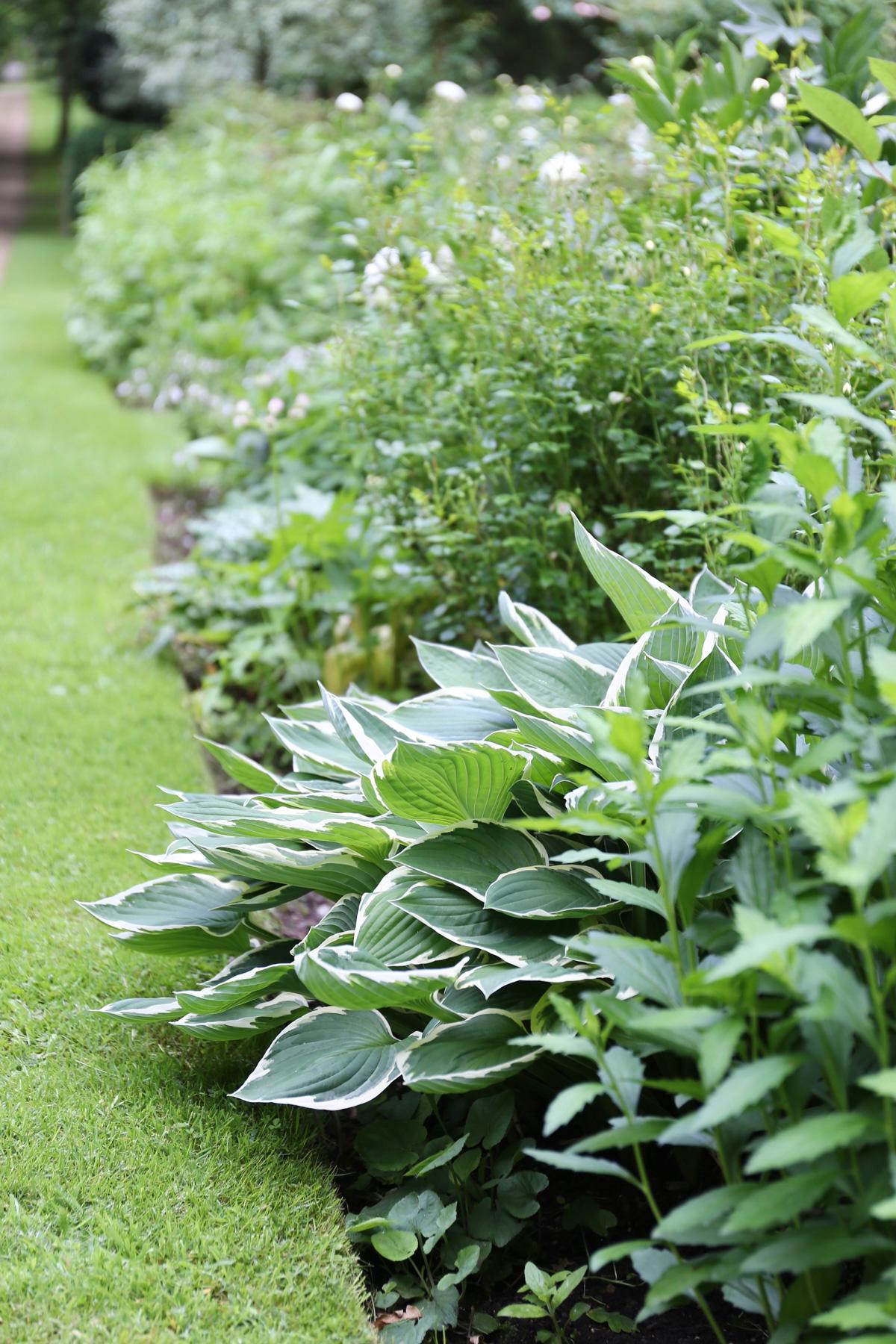
WHERE TO PLANT HOSTAS
Hostas thrive in rich, well-drained soil. Once the plants are well established, they will tolerate relatively dry soil, but consistent moisture is best. If deer are a problem in your area, plant hostas near your house or in other areas that are off limits to deer. Here are some popular ways to use hostas around your home and garden:
PERENNIAL GARDENS
Though hostas are usually grown for their foliage, most varieties also produce attractive, bell-shaped flowers in midsummer. Some hosta flowers are fragrant, and all are attractive to hummingbirds and butterflies. In a shady perennial garden, hostas are excellent companions for bleeding heart, foamflower, hellebores, epimedium, pulmonaria and primroses.
WOODLANDS
Planting an assortment of hostas is a beautiful way to line a woodland path. Leaf color ranges from dark green to steely blue, chartreuse and creamy white. Many cultivars have variegated foliage that displays two or even three different color combinations.
GROUND COVER
Small-leaved, low-growing hostas can be used as a ground cover beneath trees or around shrubs.
LAWNS
It can be challenging to maintain a nice-looking lawn beneath large shade trees. Instead, consider replacing the grass with a massed planting of large-leaved hostas.
BULB COMPANIONS
Hostas are excellent companions for spring-blooming bulbs. They unfurl their leaves just as daffodils, scilla, crocus and other bulbs are fading away.
CONTAINERS
When planting a decorative container garden for a shady porch or patio, add a small or medium-leaved hosta. The foliage complements colorful annuals and will stay fresh all season long. In the fall, simply remove the plant and plant it in the garden.

WHAT TO EXPECT
Hostas come in many different sizes. Some grow just 6" tall and some get to be 3 feet tall and 3 feet wide. When planting hostas, make sure you know how large the plants will be when they are mature, and leave adequate space between each plant.
During the first growing season, you can help your hostas get established by watering them weekly or whenever the weather is dry. While the plants are young, mulch them with shredded bark or shredded leaves to keep the roots moist and minimize weed growth. Once the leaves are large enough to shade the soil, mulching will not be necessary.
Hostas with golden foliage are more colorful when their leaves are in direct sunlight for part of the day. Blue-leaved hostas look their best when they get very little direct sun. If hosta leaves display brown scorched edged or tips, they need to be moved to a shadier location and receive more moisture. Both deer and slugs love hosta leaves. If slugs are a problem in your garden, seek out hosta varieties that have thicker, more slug-resistant foliage. Foliar sprays can be used to help deter both slugs and deer.
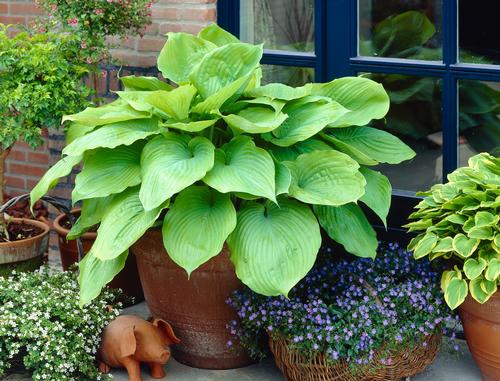
HOW TO CARE FOR HOSTAS
Most hostas flower from mid to late summer. Once the flowers have faded, cutting off the spent stalks will keep the plants looking fresh. After the first hard frost, hosta foliage quickly turns to mush. In early spring, this old foliage should be raked away to make room for new growth.
During their first few years, hostas respond well to an early spring application of all-purpose fertilizer. Distribute the fertilizer around the base of the plant, following package directions. Once the plants are well established, there's no need to fertilize. Mulching with compost will help to replenish the soil with nutrients and organic matter.
Hostas will grow well for decades without being divided. You may choose to divide the plants if they outgrow their space or if you want divisions for another area. Divide hostas in early spring before the leaves unfurl. Use a sharp spade to slice off parts of the clump or remove the entire clump from the ground and cut it into pieces.
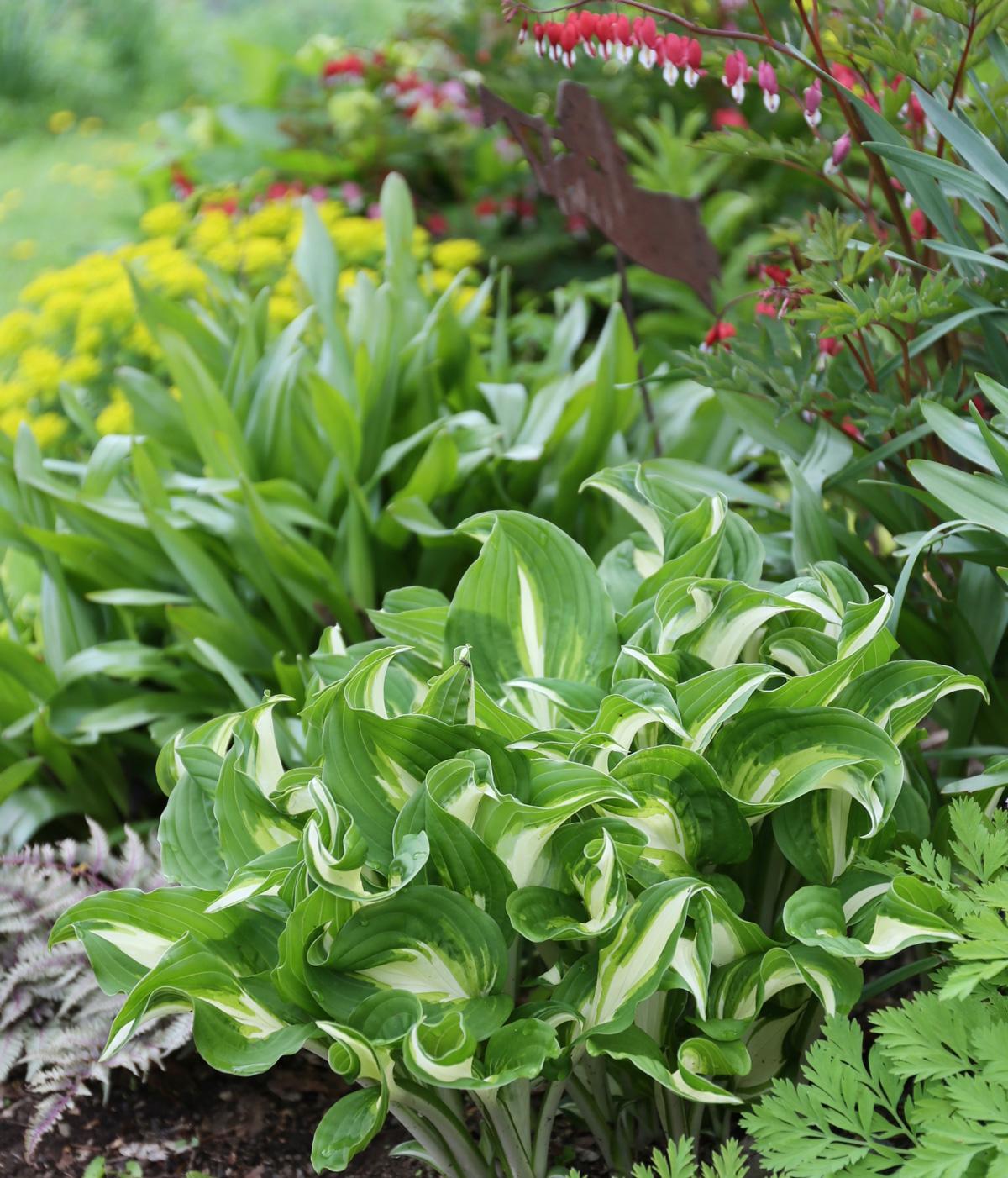
Shop our selection of hostas HERE.
To learn more about hostas and other shade-loving plants, you may be interested in reading:
How to Get Creative With Hostas
10 Easy Perennial for Shady Gardens


